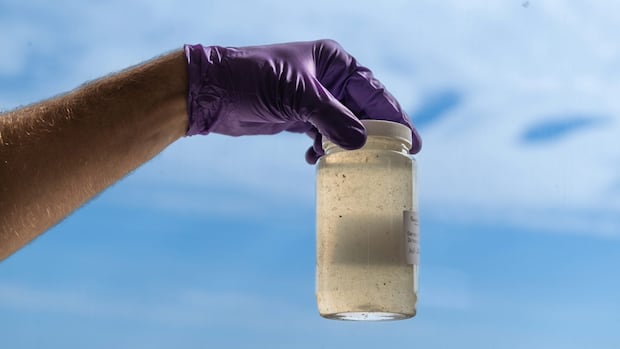As Canada deals with its largest measles outbreak in more than a decade, health experts say a COVID-era tool could help tame the spread.
Wastewater surveillance, which involves testing sewage samples for viral pathogens, became essential during the pandemic. The data helped overwhelmed health officials map out COVID-19’s path and better predict the trajectory of cases.
At the time, it was praised as a critical public health tool that could serve as a warning system to keep Canadians safe from future harmful infections. And as the current measles outbreak surpasses 500 cases in Canada, experts say this is the moment where leaning into regional wastewater surveillance would be most helpful.
And yet, public health officials aren’t actively using this tool to test for measles.
In fact, wastewater surveillance has been scaled back in Ontario, a current measles hotspot, which scrapped its program last summer. The province said it would instead rely on the Public Health Agency of Canada (PHAC), which has a wastewater monitoring dashboard that compiles data from multiple sites across the country.
But PHAC’s dashboard currently doesn’t track the measles virus. A spokesperson told CBC News the agency tracks weekly measles case counts and publishes them online, but that there are “no plans” for additional monitoring through wastewater. Measles has been placed at the highest standard for monitoring cases, it said, as a “nationally notifiable disease in Canada.”
Detecting measles before symptoms arise
Like COVID-19, measles patients can sometimes be asymptomatic but still contagious, meaning the cases reported now are likely an underestimate. That’s where wastewater surveillance could have a major impact.
“We could identify the wastewater catchment areas where the measles virus might be spreading and then put in public health measures that would make a huge difference,” said Eric Arts, a microbiology professor at Western University.
The COVID-19 pandemic showed scientists how useful wastewater could be to track infectious diseases, now it’s being used to help identify other outbreaks including monkeypox and polio.
For example, he says in areas where they detect high amounts of the virus, public health could ramp up vaccination or education campaigns.
A study published out of Ottawa earlier this year highlighted the potential of monitoring measles in this way and found that it complements other public health interventions.

Mike McKay, director of the Great Lakes Institute for Environmental Research (GLIER) in Windsor, Ont., has been testing wastewater for COVID-19 since the early days of the pandemic.
His team has a formal data-sharing agreement with PHAC to look for COVID-19, the flu and respiratory syncytial virus (RSV).
And as of last year, health officials across the border in Detroit asked them to test weekly wastewater samples for measles.
In February, he said his team started doing the same in southwestern Ontario.
“We essentially are taking the pulse of the health of the community,” said McKay.
“Measles is a great candidate for detection, because individuals who are infected will shed [the] virus usually four days or so before manifestations of the illness are present.”
At this time, McKay says PHAC has not asked him to test for measles. But through other informal agreements, he’s been running the tests for the municipality of Leamington in Ontario, as well as Windsor Regional Hospital and the University of Windsor.
Another step
One challenge with all of this, according to McKay, is that measles requires an extra step in the testing process.
That’s because it uses a live-attenuated vaccine, or a weakened and harmless form of the virus. As a result, when someone gets vaccinated, McKay says, it could cause a mild reaction.
That reaction can mimic some of the symptoms of a measles infection, and those people can shed the vaccine virus into the wastewater, as well, which could be misleading.
Because of that, the signal would have to be further sequenced to determine whether it’s from the vaccine or virus. That currently takes a few extra days, he said.

Few testing sites leave gaps
Even though both McKay and Arts believe the tool is necessary, they agree that there need to be more testing sites in order for it to actually be helpful.
Depending on the virus, PHAC has a different number of sites reporting information. Most reporting sites appear to be focused on COVID-19, with 74 listed across the country — PHAC notes that covers about 37 per cent of the population.
Especially given what’s happening now in Ontario, Arts said, “the rationale for cancelling the wastewater surveillance programs made no sense.”
The initiative itself, he says, is low-cost and more efficient compared to methods like contact tracing — which can be burdensome as cases rise.
A memo from Ontario’s chief medical officer of health Dr. Kieran Moore earlier this month confirmed that the current outbreak was from a “large gathering with guests from Mennonite communities in New Brunswick last fall.”
Had wastewater surveillance been in place, public health might have been able to get ahead of the spread.
Many cases in southwestern Ontario — particularly in Brant, Brantford, St. Thomas, Haldimand County and Norfolk County — are related to this outbreak, says the memo. Exposures and more cases have also been reported in Manitoba, from family visits to Ontario.
“Cases could spread in any unvaccinated community or population but are disproportionately affecting some Mennonite, Amish and other Anabaptist communities, due to a combination of under-immunization and exposure to measles in certain areas,” reads part of the letter.
Those areas don’t have active wastewater monitoring for any viruses, says McKay. But in times like these, he stresses its importance.
“The public health units in those regions just don’t have access to this data. They don’t know when the outbreak has plateaued in their region,” he said.



